Dog park etiquette: all the tips you’ll need to stay safe and happy
April 14, 2021Visiting a dog park can be exciting for both you and your furry friend, but there are some important things to keep in mind before going.
Dog parks provide so many benefits for a dog’s physical and mental health. They can be excellent places for dogs to socialise, as well as safe places for them to explore new environments. They can run around and burn off energy, which is particularly handy if you do not have a big backyard.
Dog parks are also great places for you to meet other dog owners and connect over your shared love of dogs.
Dog park etiquette is hugely important, so here are some tips on what to do, what to bring, and how to react if there’s an emergency!
NOTE: We want to stress that while dog parks are great for socialising, not all dogs are suitable for dog parks. It is important that you only ever take your pooch to the park if you are 100% confident that they can handle it. Dogs who are anxious in new environments or have a history of aggression can often act out in highly stimulating environments, which can endanger the safety of other dogs and their owners.
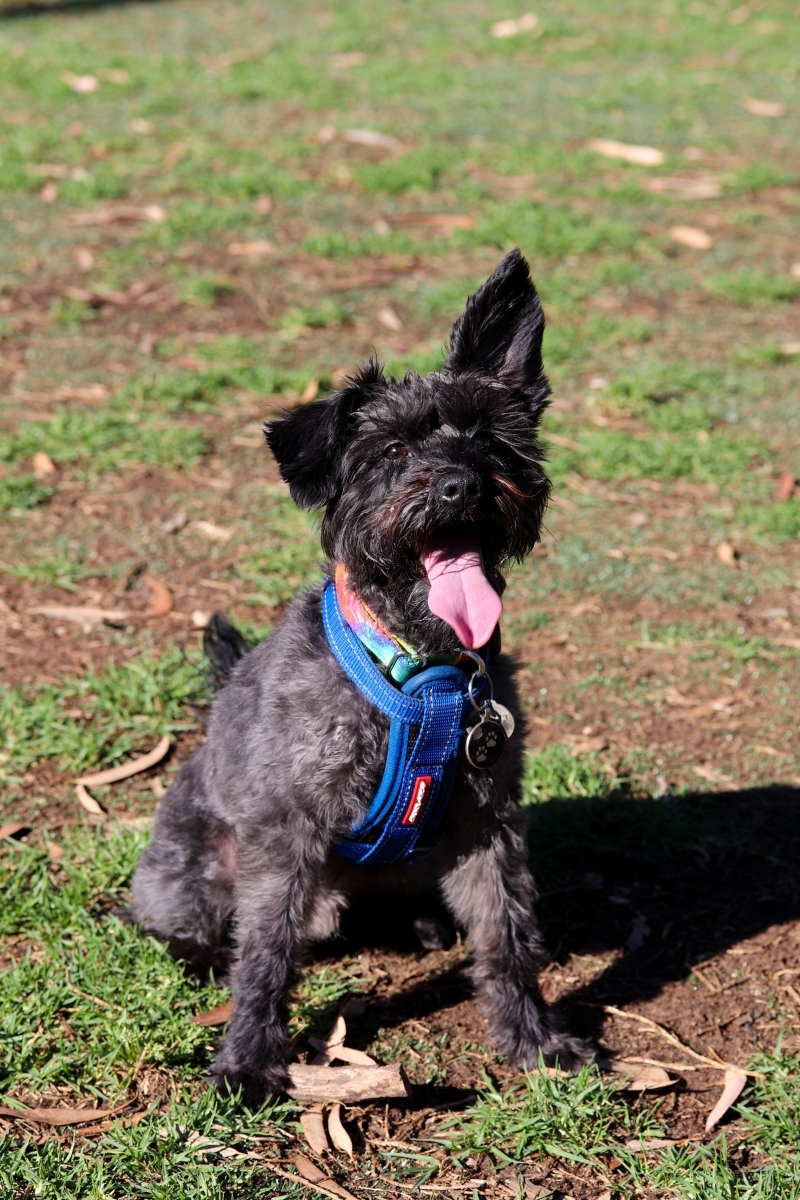
Before going to the park
Before making the journey to a dog park, ensure your dog is fully vaccinated, desexed, microchipped and registered.
Dogs will be running around and in close contact with each other, so the last thing you want is for an infection to spread, or an unplanned pregnancy!
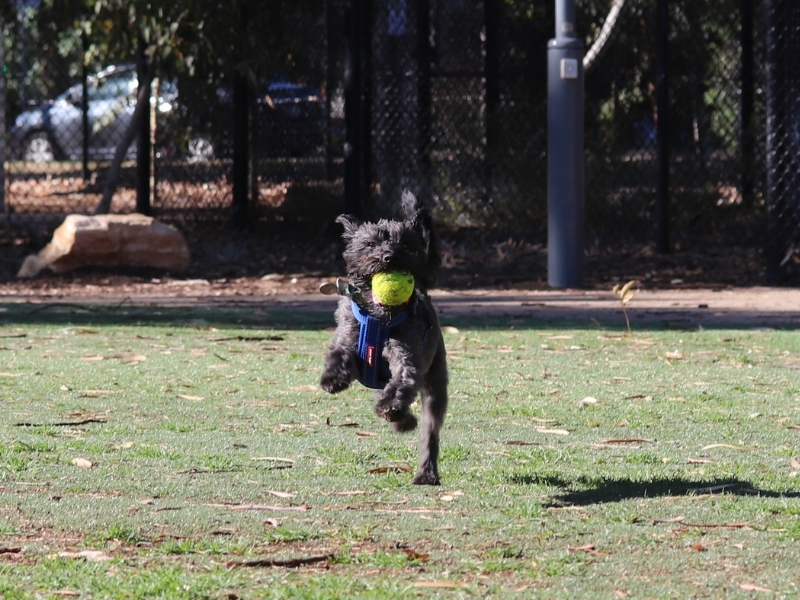
Is your dog suitable for a dog park?
It is also crucial that you only take your dog to the dog park if you are sure that they are comfortable around both other dogs and other people.
Dog parks are highly stimulating places for dogs as they get to run around off lead, interact with new dogs and smell new things. Dogs can become easily overwhelmed and might react with aggression if they feel threatened.
If your dog is a little bit shy, it can be a good idea to take them to the dog park at a quieter time and perhaps even organise to go with one of their doggy pals so they have a friend by their side.
It is a good idea to make sure your dog has good recall (meaning, you can rely on him to come when called), especially in an emergency situation such as a dog fight. Good recall is also helpful when leaving the park, as you won’t have to run around chasing your dog and trying to put his leash on!
For tips on how to improve recall, head to our Knowledge Base
We also highly recommend that you only take your pooch to the dog park once they’ve had some training. This not only ensures that your dog is obedient, but the trainer may also offer insight or advice for dog parks specifically for your dog.
You can find out more about the various force-free dog training courses we offer here.
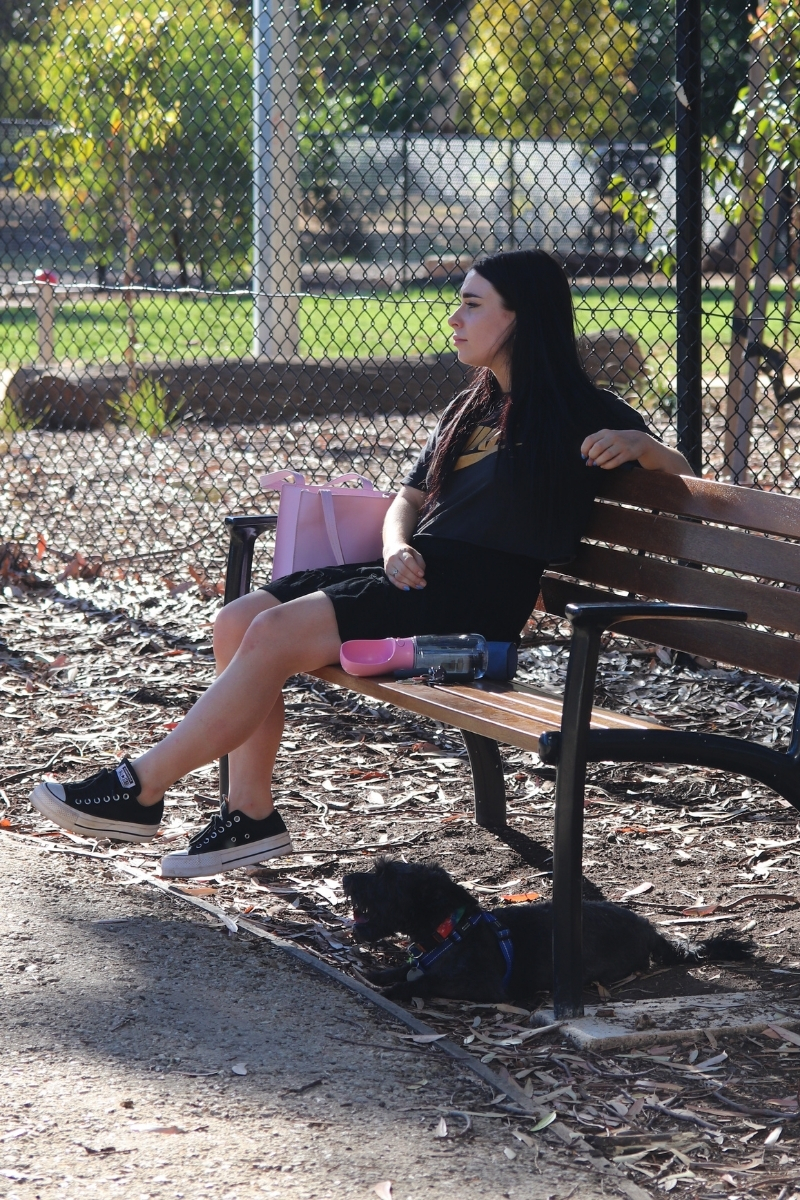
What to bring to the dog park
Thankfully, you don’t need to bring much to the dog park to have a good time. Bring some water for both yourself and your dog, and perhaps a water bowl – just in the case the dog park doesn’t have a water bowl available or it is polluted. You’ll need your dog’s leash and we recommend you use a correctly fitted harness rather than just a collar. Find out about dog harnesses, and how to fit them correctly, here.
You might also want to bring a towel in case your dog gets dirty, which is super useful if you drove there – you don’t want your car’s interior messed up!
We don’t advise bringing toys, as this may result in unwanted competition with the other dogs. However, it may be a good idea to keep some toys in the car just in case you visit an empty dog park and want to keep your dog entertained, just like Frankie here in these photos ☺
Similarly, keep some treats on you, but keep them hidden. Treats can be great for ensuring good recall and possibly even diffusing a tense situation. Our Dog Training Coordinator, Heather Bradley, suggests doing a scatter of tiny treats to keep dogs happy and entertained. This immediately calms down any escalating situation. It’s a good idea to ask permission from the other dog owners before doing so.
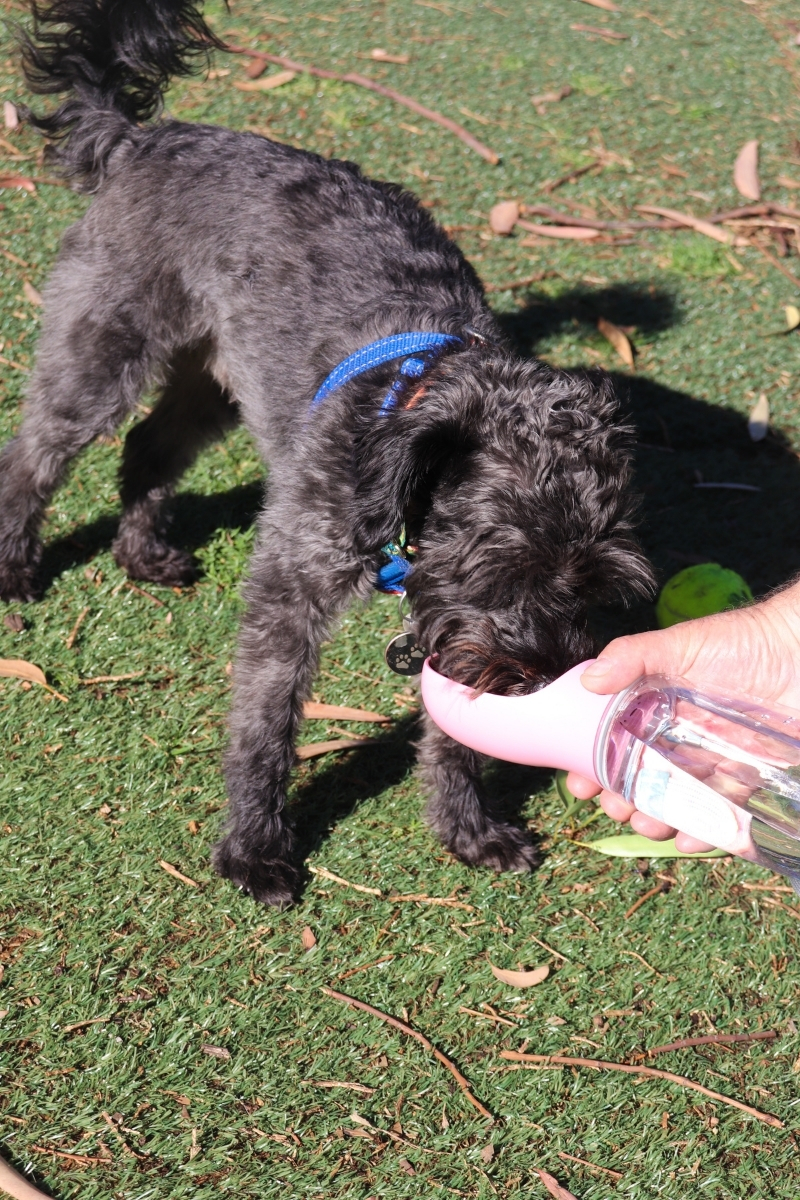
While you’re there
The number one rule when visiting a dog park is not to take your eyes off your pet.
It’s easy to get distracted when talking to the other dog parents or looking down at your phone, but it’s important to know where your dog is and what your dog is doing at all times.
It is also important to read your dog’s body language. Help your dog out if you see him showing signs of exhaustion or becoming overheated by taking him to a quiet, shady area and giving him lots of water. This is so important, because if your dog’s body temperature is elevated he could be at risk of heatstroke, and that can be fatal. Obese dogs, flat-faced dogs (like bulldogs), older dogs and long-coated dogs are all at greater risk. We advise against visiting dog parks on hot days, or visiting in the early morning or evening when it’s cooler. Find out more about heatstroke and how to avoid it here.
If your dog is too scared to play with the other dogs or won’t stray far from your legs, don’t force your dog to socialise as he is clearly overwhelmed and uncomfortable. Instead, either put him back on the leash or take him away from the other dogs for a little while.
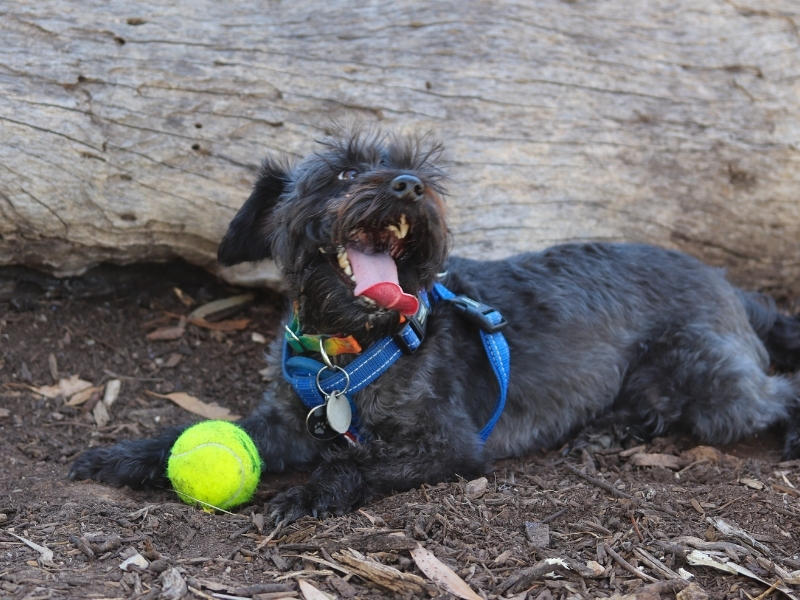
In the event of an emergency
Always make sure your dog isn’t being hostile towards other dogs. As there is no screening process when entering a dog park, there is no way of knowing if a dog will be aggressive, or have behavioural issues due to trauma, so there are occasions where dogs get into fights.
If this occurs, never step into the middle of a dog fight. See if you can stop the fight by calling their name and putting their leash back on when they come to you.
While keeping an eye on your dog, pay attention to their behaviour and body language. To help recognise the signs of fear and aggression in dogs, head to this post on our Knowledge Base on how to best communicate with your dog.
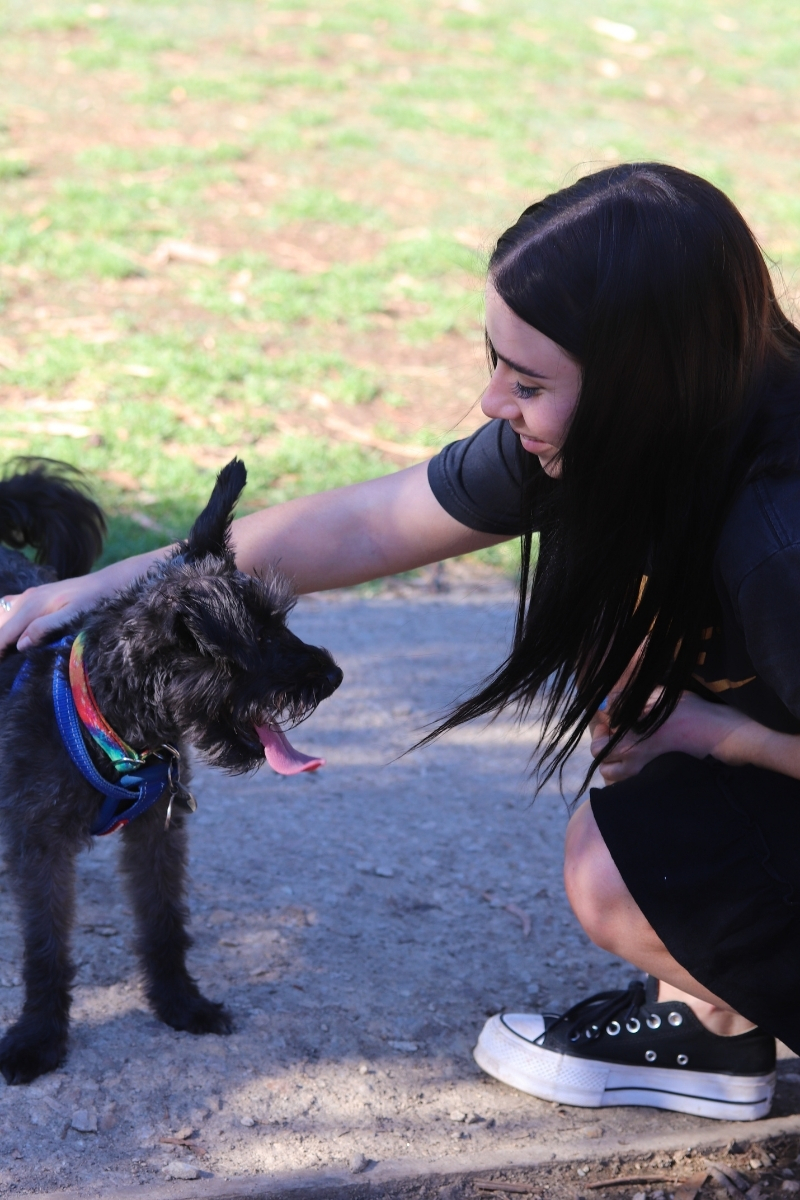
Please remember to do this
This should go without saying, but make sure you are always picking up your dog’s waste and disposing of it in the bins provided.
Failure to do this will not only contaminate the area and make it unpleasant and a health hazard for everyone, but you can also be fined for not picking up after your dog, so make sure you see where your dog is doing his business.
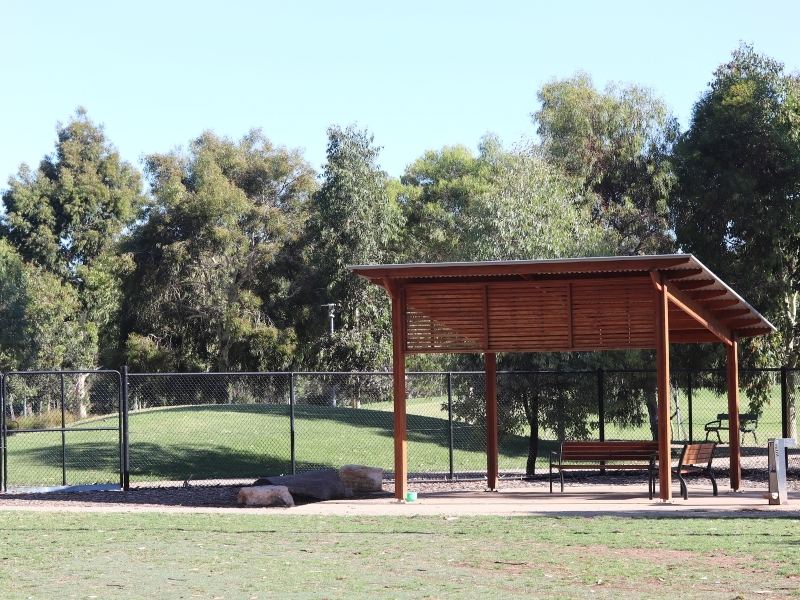
Where to go:
Now that you are fully prepared for the dog park, all that’s left is to find one near you. There are plenty of fun and safe dog parks to take your pooch in Adelaide and its surrounding areas. Below is just a select few:
- Pityarilla Dog Park (Adelaide)
- North Adelaide Dog Park
- Symonds Reserve Dog Park (Aldinga Beach)
- Stebonheath Dog Park (Andrews Farm)
- Adelaide Brighton Community Dog Park
- West Torrens Dog Park
- Mawson Lakes Dog Park
- Conyngham Street Dog Park (Glenside)
- Golden Grove Dog Park
- Four Paws Park (Hectorville)
- CC Hood Reserve (Panorama)
- Barka Park (Mt Barker)

While there are certainly many things to keep in mind when visiting dog parks to ensure the safety of your dog and the people around you, the most important thing is to have fun. ????


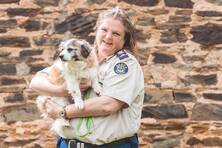
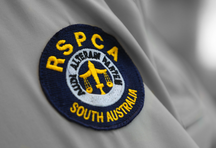

Great article – should be printed up by councils and put up at dog parks !